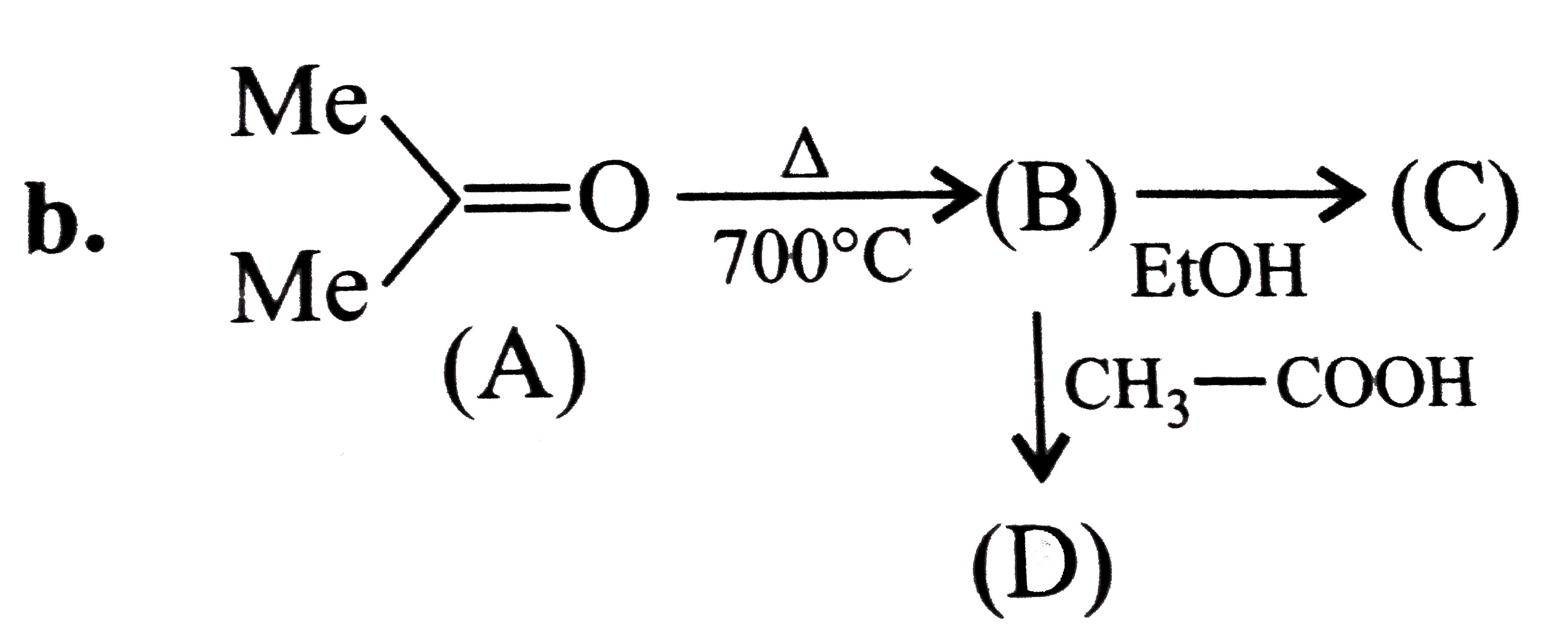Complete Solutions to Solved Examples of chapter ALIPHATIC AND AROMATIC ALDEHYDES AND KETONES of Class 12 book with complete answers and questions
| Class 12 | CHEMISTRY |
| Chapter | ALIPHATIC AND AROMATIC ALDEHYDES AND KETONES |
| CENGAGE CHEMISTRY | Solved Examples |
| Number Of Questions | 13 |
| Academic Year | 2023-24 |
Write the structure of various isomers formed in the reaction given below.

Gives two seperable isomers.
View SolutionIdentify the compounds (A) and (B).
`(A)underset("Iodoform test")underset("Gives(+ve)")((C_(11)H_(12)O)) overset(O_(3)//Red)rarr (B) underset("iodoform test")underset("Gives(+ve)")((C_(10)H_(10)O_(2))) +CH_(2)=O`
(B) is symmetrical p-subsituted compound. (Ignore ozonolysis of benzene ring at the initial stage).
View SolutionExplain:
a. `alpha`-Halocarbonyl compounds, even the `3^(@)` types like , do not undergo `SN^(1)` reaction.
, do not undergo `SN^(1)` reaction.
b. Which is more reactive: (i) PrCI or (ii) `MeCOCH_(2)CI` with NaI/acetone ?
c. Acetals and ketals are regenerated back to carbonyl. compounds with `H_(3)O^(o+)` but not with `overset(Θ)(OH)`.
d. Cyclohexane is more reactive than cyclopenatone with HCN.
View SolutionComplete the following reactions:
a.
b.
c.
View SolutionDistinguish between the following:
a.
View SolutionComplete the following reactions:
a.
View SolutionComplete the following reactions:
a.
b.
c.
d.
e.
View SolutionComplete the following reactions:
a.
b.
c.
View SolutionIdentify (A) to (C ):

View SolutionExplain the mechanism of the following reaction:

View SolutionExplain the formation of (B), (C ) and (D) in the given reaction:

View SolutionName the following reactants also give names of reactions involved.
a.
b.
c.
d.
e.
f.
g.
h.
i.
j.
k.
View SolutionComplete the following reactions:
a.
View Solution
Solved Examples questions and complete solutions for chapter ALIPHATIC AND AROMATIC ALDEHYDES AND KETONES of CENGAGE CHEMISTRY (ENGLISH) of Class 12
All Exercises from CENGAGE CHEMISTRY Class 12 CHEMISTRY ALIPHATIC AND AROMATIC ALDEHYDES AND KETONES
- Archives Fill In Theblanks
- Archives Linked Comprehension
- Archives Multiple Correct
- Archives Objective
- Archives Subjective
- Archives True And False
- Exercises Assertion-Reasoning
- Exercises Concept Application
- Exercises Linked Comprehension
- Exercises Multiple Correct
- Exercises Single Correct
- Exercises Subjective
- Illustration
- Solved Examples